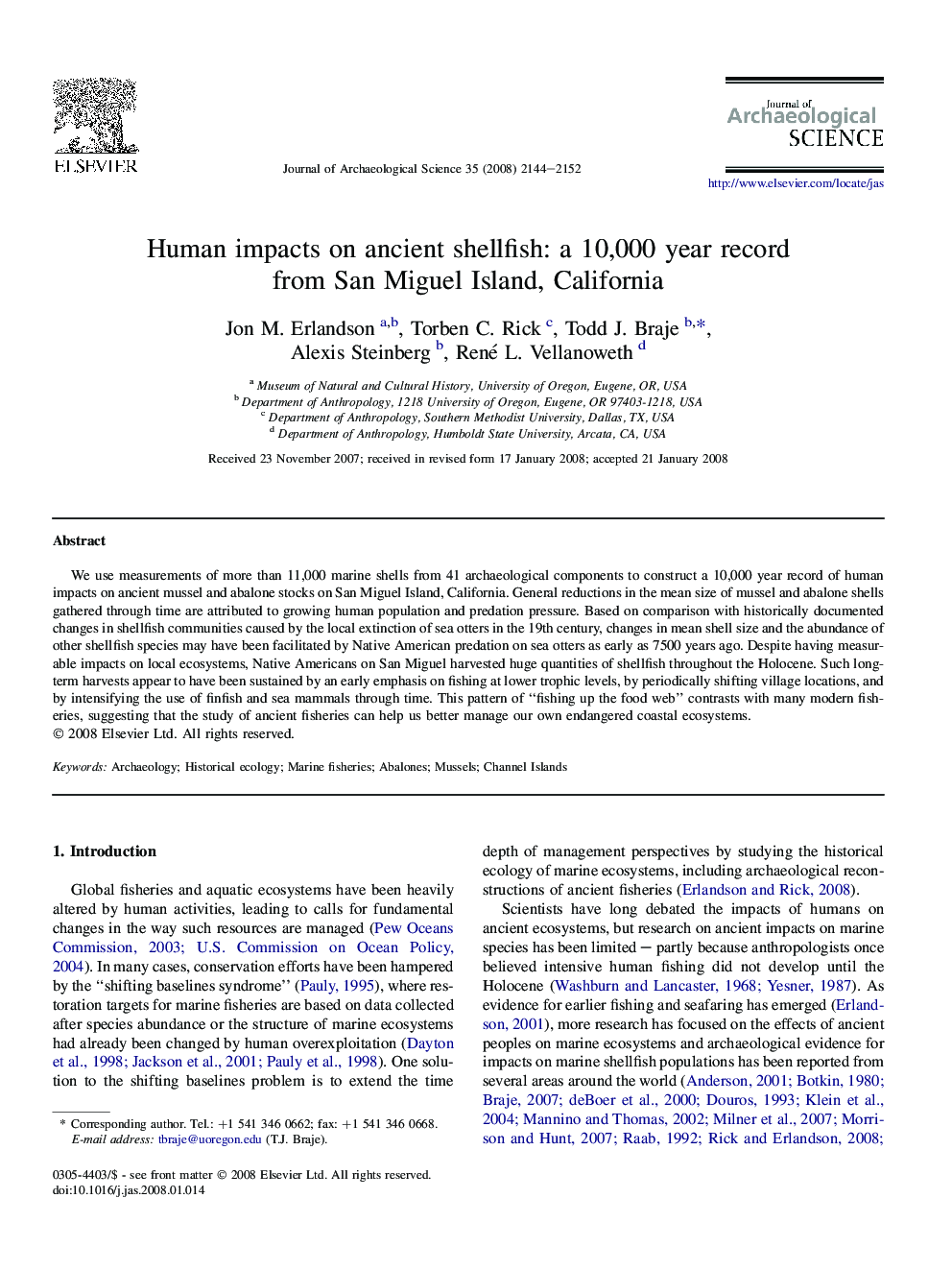| Article ID | Journal | Published Year | Pages | File Type |
|---|---|---|---|---|
| 1037063 | Journal of Archaeological Science | 2008 | 9 Pages |
We use measurements of more than 11,000 marine shells from 41 archaeological components to construct a 10,000 year record of human impacts on ancient mussel and abalone stocks on San Miguel Island, California. General reductions in the mean size of mussel and abalone shells gathered through time are attributed to growing human population and predation pressure. Based on comparison with historically documented changes in shellfish communities caused by the local extinction of sea otters in the 19th century, changes in mean shell size and the abundance of other shellfish species may have been facilitated by Native American predation on sea otters as early as 7500 years ago. Despite having measurable impacts on local ecosystems, Native Americans on San Miguel harvested huge quantities of shellfish throughout the Holocene. Such long-term harvests appear to have been sustained by an early emphasis on fishing at lower trophic levels, by periodically shifting village locations, and by intensifying the use of finfish and sea mammals through time. This pattern of “fishing up the food web” contrasts with many modern fisheries, suggesting that the study of ancient fisheries can help us better manage our own endangered coastal ecosystems.
